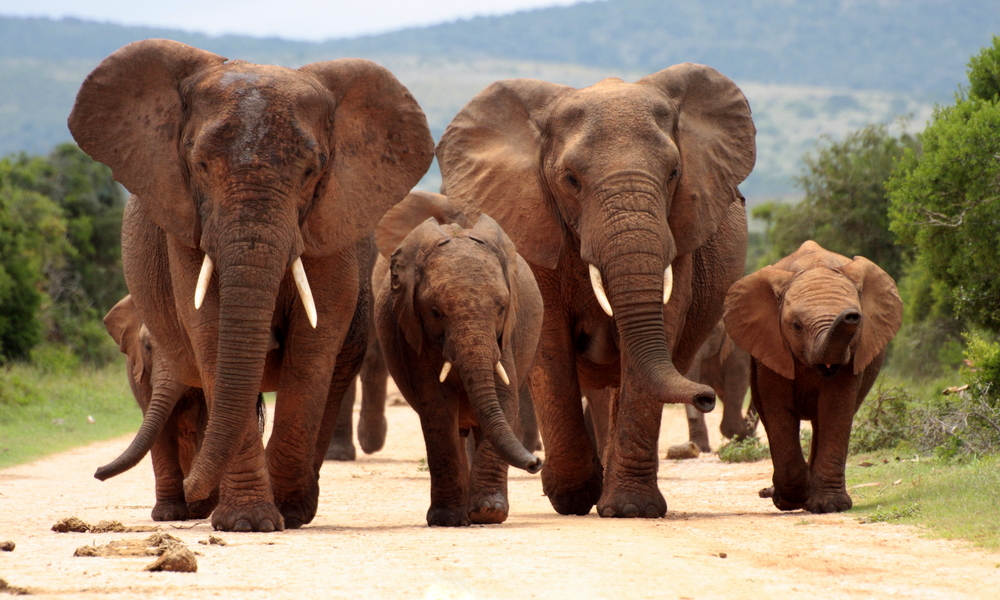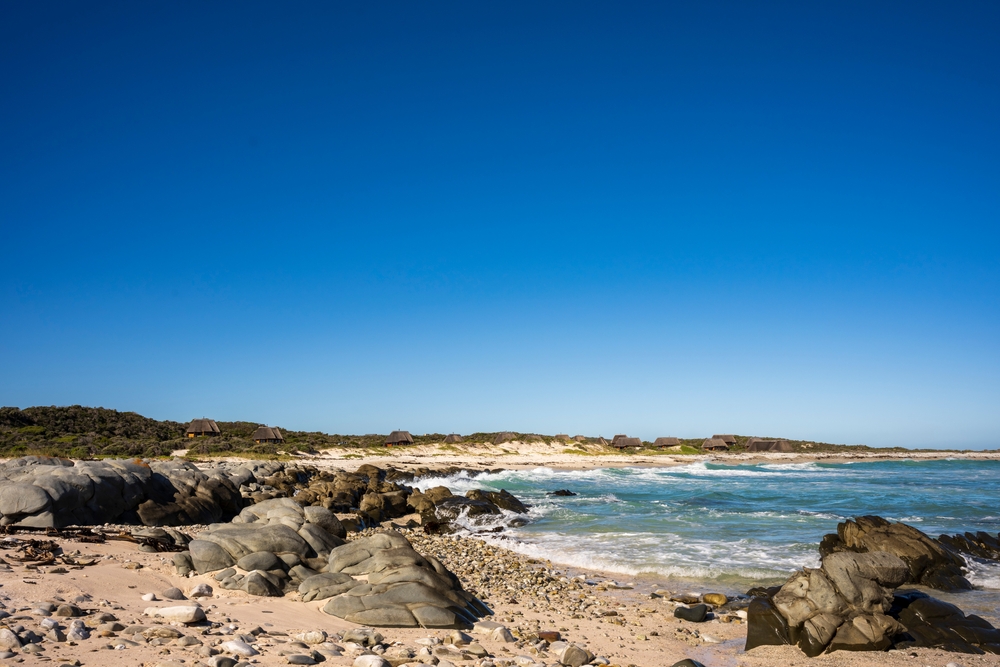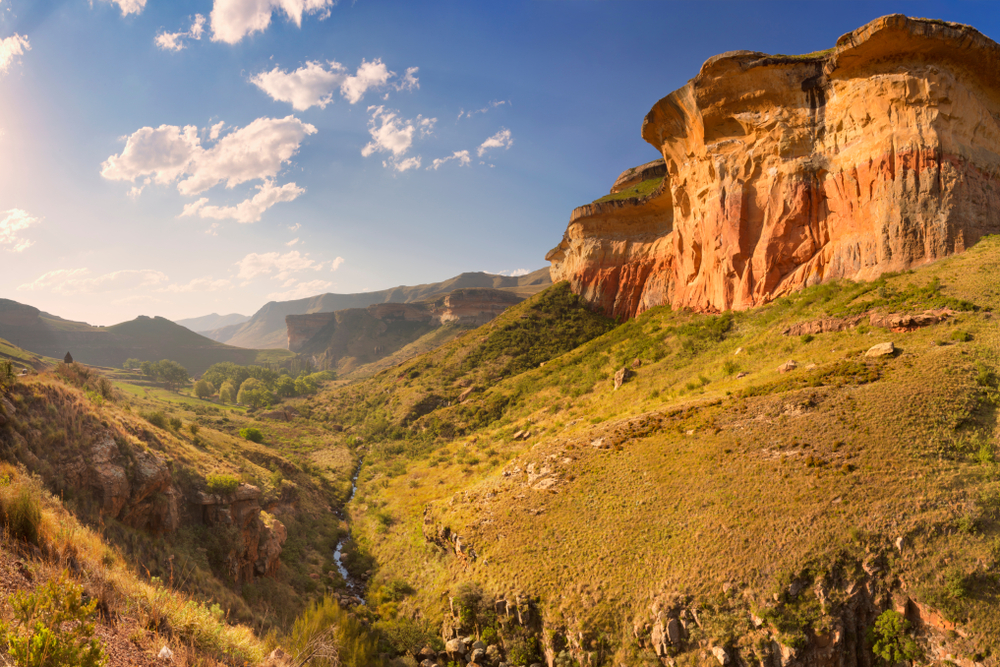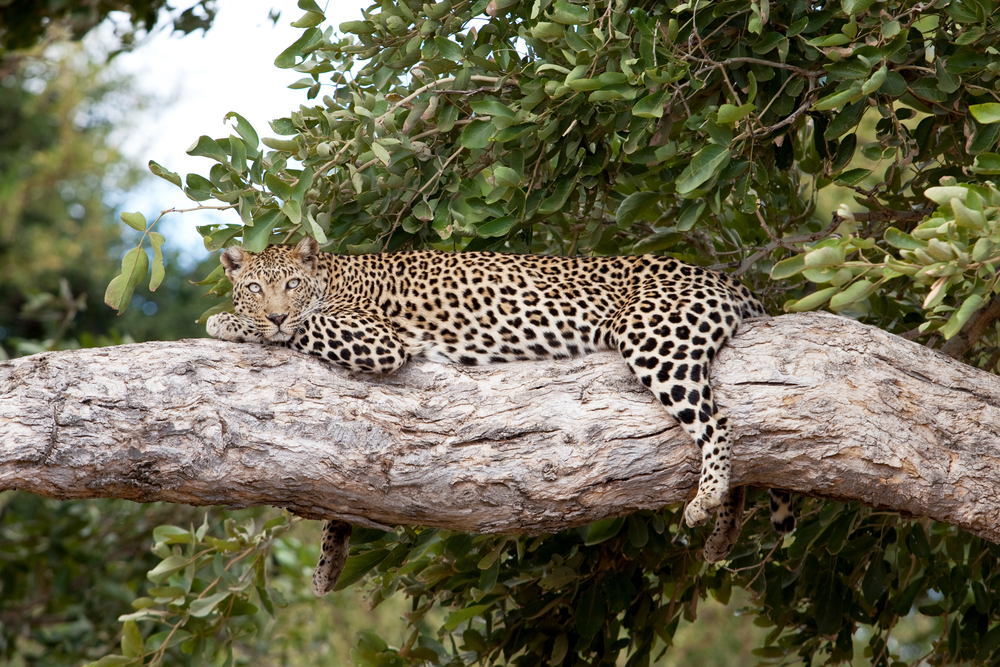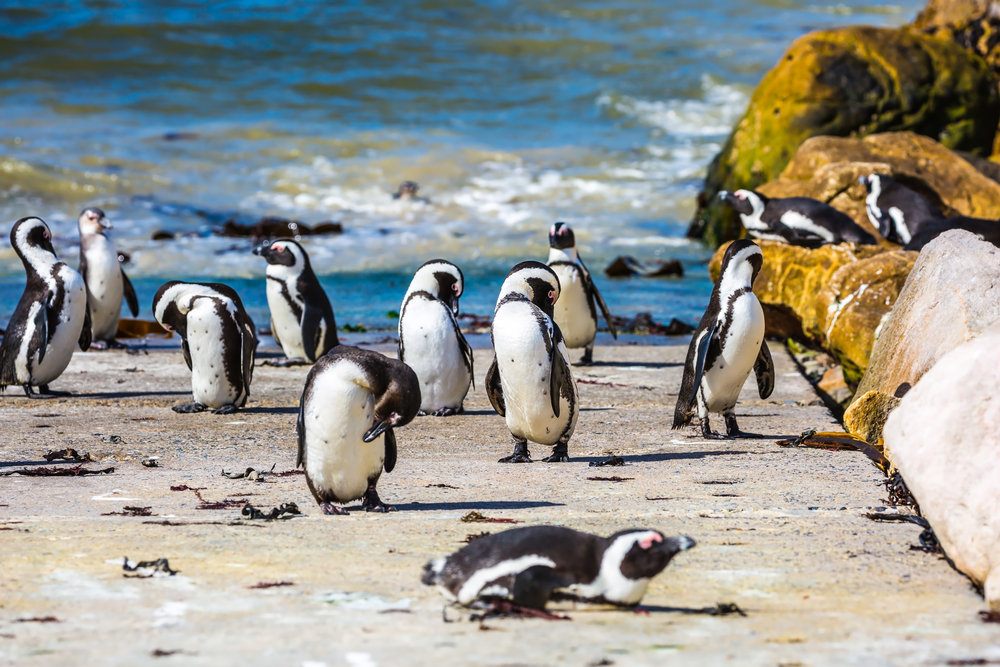Augrabies Falls Overview
Augrabies Falls National Park, locally known as “Augrabieswaterval Nasionale Park” in Afrikaans, is a striking protected area in South Africa’s Northern Cape Province. Established in 1966, the park spans approximately 820 square kilometers (316 square miles) along the Orange River. Named after the thunderous Augrabies Falls, which derives its name from the Khoikhoi word “Aukoerebis,” meaning “place of great noise,” the park is a haven for biodiversity and a captivating destination for nature enthusiasts.
The park’s terrain is dominated by arid landscapes, including rugged granite outcrops, deep gorges, and vast stretches of rocky plains. The Orange River carves its way through the park, creating the spectacular Augrabies Falls, where the river drops 56 meters (183 feet) into a narrow gorge below. This powerful waterfall, particularly during the rainy season, is the park’s centerpiece and a must-see attraction. The landscape is further enhanced by unique geological formations, including the Moon Rock, a massive granite dome offering panoramic views of the park.
The vegetation in Augrabies Falls National Park is adapted to the harsh, semi-desert environment. The park is part of the Nama Karoo biome, characterized by hardy plants such as quiver trees, succulents, and acacias. These species thrive in the arid conditions, providing essential habitats and food sources for the park’s wildlife.
Augrabies Falls National Park is home to a variety of wildlife. Large mammals include giraffes, gemsbok, and eland, while smaller species such as klipspringers and rock hyraxes are commonly sighted among the rocky outcrops. Predators like leopards and jackals roam the area but are elusive. The park also hosts over 180 bird species, including Verreaux’s eagles and sociable weavers, making it a rewarding destination for birdwatching. Reptiles such as lizards and tortoises thrive in the hot, dry conditions, further adding to the park’s biodiversity.
Visitors to Augrabies Falls National Park can engage with its natural beauty through various activities. Viewing platforms and trails around the waterfall provide breathtaking perspectives of the gorge and the surrounding landscapes. Hiking trails, such as the Dassie Nature Trail and Klipspringer Hiking Trail, offer opportunities to explore the park’s diverse terrain and spot wildlife. Game drives allow visitors to venture further into the park, while stargazing at night provides an unforgettable experience under the clear desert skies. Canoeing and kayaking on the Orange River offer unique ways to experience the park’s aquatic environment.
Despite its appeal, Augrabies Falls National Park faces challenges such as climate change, which threatens water flow in the Orange River, and the impacts of human activity on its fragile ecosystems. Conservation efforts by South African National Parks (SANParks) focus on habitat restoration, water management, and environmental education to protect the park’s unique landscapes and biodiversity.
Augrabies Falls National Park is a testament to the resilience of life in extreme environments. Its dramatic landscapes, diverse wildlife, and iconic waterfall make it a must-visit destination. By protecting this park, South Africa ensures the preservation of its natural wonders and cultural heritage for future generations.











































































